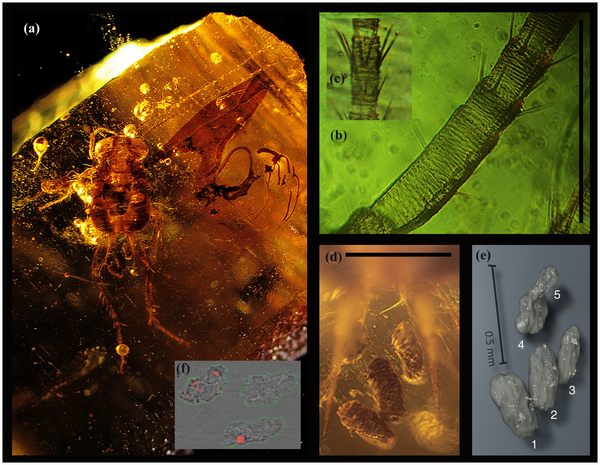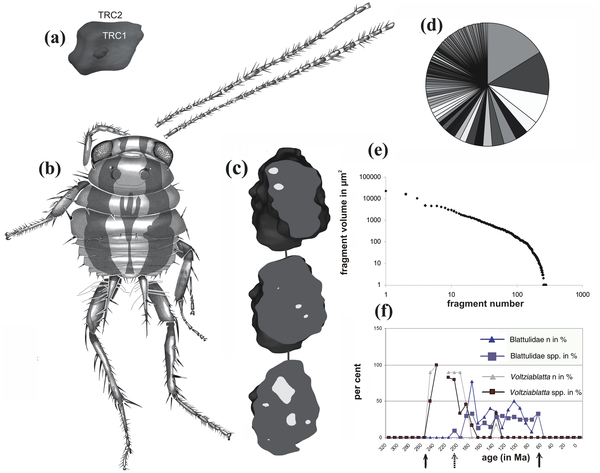Dinosaurs undoubtedly produced huge quantities of excrements. But who cleaned up after them? Dung beetles and flies with rapid development were rare during most of the Mesozoic. Candidates for these duties are extinct cockroaches (Blattulidae), whose temporal range is associated with herbivorous dinosaurs. An opportunity to test this hypothesis arises from coprolites to some extent extruded from an immature cockroach preserved in the amber of Lebanon, studied using synchrotron X-ray microtomography. 1.06% of their volume is filled by particles of wood with smooth edges, in which size distribution directly supports their external pre-digestion. Because fungal pre-processing can be excluded based on the presence of large particles (combined with small total amount of wood) and absence of damages on wood, the likely source of wood are herbivore feces. Smaller particles were broken down biochemically in the cockroach hind gut, which indicates that the recent lignin-decomposing termite and cockroach endosymbionts might have been transferred to the cockroach gut upon feeding on dinosaur feces.

Dinosaur-age cockroach of the extinct family Blattulidae.
(A – head to leg end length: 3.8 mm) with antennal sensory system (B, C) and five preserved coprolites (D – optical, E – surface rendering of numbered coprolites and dense particles based on the image stack from synchrotron X-ray microtomography; F – ST orthoslice with labelled boundaries and fragments). Lebanon amber 1094A-I. Scales 0,5 mm.
doi:10.1371/journal.pone.0080560.g001

Dinosaur-age wood decomposing cockroach with coprolite and its ecological context.
A) wood fragment no. 123 (coprolite no. 3), volume 23077 µm3 (TRC- parenchymatous tangential ray cells); B) Lebanese amber (Blattulidae 1094A-I), length (head to leg end): 3.8 mm; C) a virtual synchrotron section (~1.2 mm) through coprolite no. 3, wood particles are pale; D) percentual representation of volume of the respective wood particles; E) distribution analysis of simple particle count of 280 wood fragments present in all five coprolites plotted over the fragment size; F) Ratios of the Blattulidae and “Voltziablatta”- group – families that replaced each other during the Triassic (interrupted arrow) – to all cockroaches, plotted over the timescale (in Ma). The origin and extinction of dinosaurs are pointed with arrows. “N in %” means percentual representation of number of specimens, “spp in %” is a percentual representation of species. Original data.
doi:10.1371/journal.pone.0080560.g002
Citation: Vršanský P, van de Kamp T, Azar D, Prokin A, Vidlička L, et al. (2013) Cockroaches Probably Cleaned Up after Dinosaurs. PLoS ONE 8(12): e80560. doi:10.1371/journal.pone.0080560
Editor: Ulrich Joger, State Natural History Museum, Germany



 December 10th, 2013
December 10th, 2013  Riffin
Riffin  Posted in
Posted in  Tags:
Tags: 